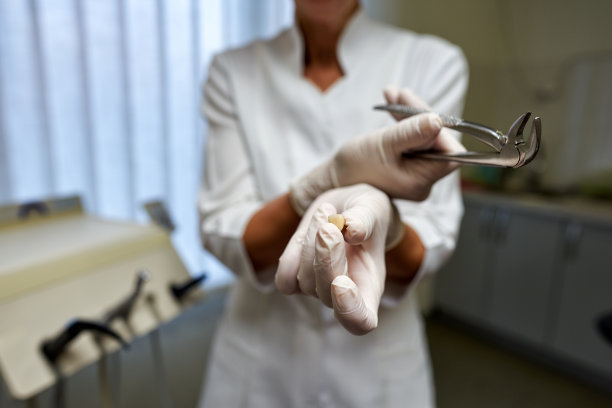A Comprehensive Guide to the Process and Aftercare for Extracting a Tooth Safely and Effectively
Summary: Tooth extraction can be an intimidating procedure, yet understanding the process and effective aftercare can ensure a safe and comfortable experience. This comprehensive guide delves into four crucial aspects of tooth extraction: the pre-extraction consultation, the extraction procedure itself, post-extraction care, and the potential complications. By understanding these components, patients can navigate the process with confidence and promote quicker healing. Alongside medical safety, proper aftercare leads to better long-term dental health, making this guide essential for anyone facing a tooth extraction.
1. Importance of Pre-Extraction Consultation

The pre-extraction consultation is a critical first step in the tooth extraction process. During this visit, the dentist will review your medical history and conduct a thorough examination of your oral health. This allows them to assess whether you are a suitable candidate for extraction and to identify any special considerations that may need to be addressed.
Additionally, diagnostic imaging, such as X-rays, will usually be performed, providing the dentist with a clear view of the tooths roots and surrounding bones. This information is vital for planning the extraction and anticipating any potential complications that may arise during the procedure.
Finally, this consultation is an excellent opportunity for patients to ask questions and express any concerns they may have about the procedure. Open communication with the dentist can help alleviate anxiety and ensure that the patient feels informed and comfortable before moving forward.
2. The Tooth Extraction Procedure Explained
Once the necessary preparations are completed, the tooth extraction procedure can begin. The dentist will administer anesthesia to ensure that the area remains numb throughout the process, minimizing discomfort for the patient. Depending on the complexity of the extraction, either local or general anesthesia may be used.
After anesthesia takes effect, the dentist will carefully remove the tooth. If it is a simple extraction, the tooth is loosened with specialized tools and gently lifted out. However, for more complex extractions, such as impacted wisdom teeth, surgical intervention may be required, involving the removal of bone or the cutting of gum tissue.
Completing the extraction involves cleaning the area and considering whether stitches are necessary. The dentist will inform the patient about what to expect during the immediate aftermath of the extraction, including bleeding and swelling, which are normal responses.
3. Essential Aftercare for Quick Recovery
After the extraction, proper aftercare is pivotal in promoting healing and preventing complications. The dentist will provide specific post-operative instructions, which usually include advice on handling pain and managing swelling. Over-the-counter pain relievers or prescribed medications may be recommended to alleviate discomfort.
Patients should also adhere to dietary instructions, avoiding hard, spicy, or hot foods for a period following the extraction. Instead, soft and cool foods are best, as they are less likely to irritate the extraction site. Hydration is essential, but straws should be avoided since suction can disrupt healing.
Moreover, maintaining oral hygiene is crucial, but patients should be cautious around the extraction site. Gently rinsing with salt water can help keep the area clean without causing irritation. Following these aftercare guidelines significantly reduces the risk of infection and promotes a quicker recovery.
4. Understanding Potential Complications
While tooth extraction is generally safe, there are potential complications that patients should be aware of. One common issue is dry socket, which occurs when the blood clot at the extraction site dislodges or dissolves before healing has occurred. This condition can lead to severe pain and delayed healing.
Another complication is infection. Signs of infection may include increased pain, fever, and swelling that does not subside. If any of these symptoms arise, it is essential to contact the dentist promptly to receive appropriate treatment.
In rare cases, nerve damage can occur, especially when extracting lower wisdom teeth. This may result in numbness or tingling in the lip or tongue. While this typically resolves over time, patients should be informed of these possibilities and know when to seek further assistance if needed.
Summary:
The process of tooth extraction encompasses several vital components, including a thorough pre-extraction consultation, the actual extraction procedure, diligent aftercare, and awareness of potential complications. Understanding each aspect contributes to a smooth experience and fosters an environment conducive to healing.
Being proactive about dental health and following professional advice can lead to successful outcomes post-extraction. For anyone facing a tooth extraction, this guide serves as a reassuring resource in navigating this common dental procedure.
This article is compiled by Vickong Dental and the content is for reference only.


